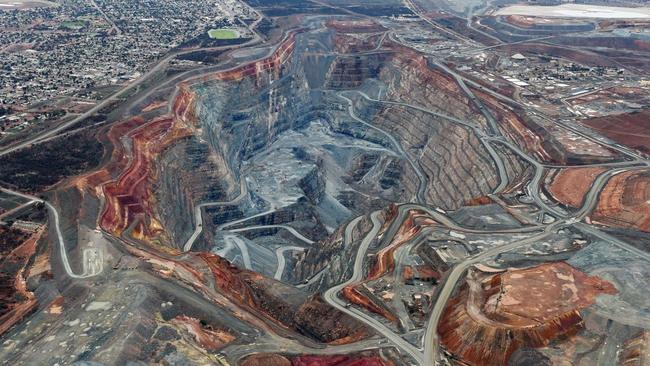Gold miners wary of volatility as prices surge again
Haunted by over-expansion in the last boom, gold miners are shunning spending as prices rise again.

When gold prices soar, miners have in the past splurged on deals and expanded production. Not this time.
Haunted by their over expansion during the last gold boom -- which saddled the sector with high debts and hit share prices when prices collapsed -- companies are shunning spending and taking a more conservative approach.
“Miners weakened their businesses,” said Sean Boyd, chief executive of Toronto-based Agnico Eagle Mines. “If it is a repeat of that last time, we are done as an industry.”
Gold has risen about 25 per cent over the past 12 months to trade above $US1500 an ounce -- around a six-year high -- as the US Federal Reserve keeps interest rates low. Unlike most metals, gold is more an investment than a raw material. Prices tend to go up when rates are low because it has less competition from yield-bearing securities like Treasurys. Worries about the health of the global economy also spur demand.
With the Fed unlikely to raise rates soon, and US-China trade tensions persisting, analysts predict further gains. BNP Paribas sees gold hitting $US1600 an ounce by the first quarter of 2020, while JP Morgan predicts the metal will average around $US1724 next year.
Despite that optimism, gold miners say they aren’t planning the same sort of megaprojects and acquisition sprees that characterised the last ramp up in prices in the years ahead of 2011. Instead, wary of volatile prices, they plan to pay down debt and return money to shareholders.
Many companies, including the world’s largest gold miner, Newmont Goldcorp, say they will only approve new projects if they can make money with gold at $US1200, about 20 per cent below where the metal currently trades. Gold prices also have spent the majority of the eight years since 2011’s bust trading above that level, underscoring how conservative companies have become.
“We won’t push ahead with investments that would struggle to sustain themselves if the gold price trades lower,” said Kelvin Dushnisky, chief executive of AngloGold Ashanti. “This was a common mistake for many gold producers in the previous upcycle.”
The South African miner, whose share price has risen 62 per cent in the year to date, is among the companies sticking by the $US1200 threshold for new projects.
Miners are reluctant to green light new mines because they take up to a decade to build. New mines also have become more expensive as the easy-to-reach, quality deposits run out. Miners can, though, turn to deposits that are within their current operations but were previously considered uneconomic. And production has risen steadily for much of the past decade, but miners say they don’t plan to turbocharge that by bringing once-uneconomic gold into their reserves.
Spending on mergers and acquisitions in the sector has been sluggish. Even with Newmont Mining’s $US10 billion all-stock takeover of Goldcorp in January, the value of acquisitions so far this year is at $US19.2 billion, less than half the level it was for the same period in 2010, according to Dealogic.
James Bell, an analyst at Royal Bank of Canada, said that, for investors, the gold sector is in a sweet spot in which companies can use the high gold price to return cash to investors without throwing money around on new projects and acquisitions.
Still Mr Bell believes that discipline will only last for the next six to 12 months.
“I think they will start spending,” he said.
Gold hit a record of $US1891.90 in August 2011. That triggered a rush of mergers and acquisitions as miners tried to increase their production. Miners also embarked on costly projects that were only economic at high gold prices. That was the case across the mining industry, with PricewaterhouseCoopers calculating in 2016 that, overall, big miners had written off $US200 billion of the value in acquisitions and projects over the previous five years.
During the last gold rally, miners were planning their projects around an assumption that the price of gold would stay between $US1400 and $US1800, said Cobus Loots, chief executive of Pan African Resources.
By December 2015, the price of gold had fallen to a low of $US1049.60 as an anticipated rise in inflation failed to materialize, among other factors.
“Debt piled up, companies went bust, and miners, hopefully, learned their lessons,” Mr Loots said. He added that his company was focusing on returning money to shareholders and reducing debt.
Mr Loots said that at a mining conference in Florida this February, all miners began their presentations to investors with the same promise: capital discipline.
That is the way a lot of investors like it.
“I think that the market wants to see cash flow first and foremost,” said Chris Mancini, an analyst with Gabelli Gold Fund. Mr Mancini said investors need to feel that the gold price will consistently stay above $US1500 for the foreseeable future before they want miners to start spending again.
“We might have a better sense of this in six months or so,” he said.
Wall Street Journal

To join the conversation, please log in. Don't have an account? Register
Join the conversation, you are commenting as Logout